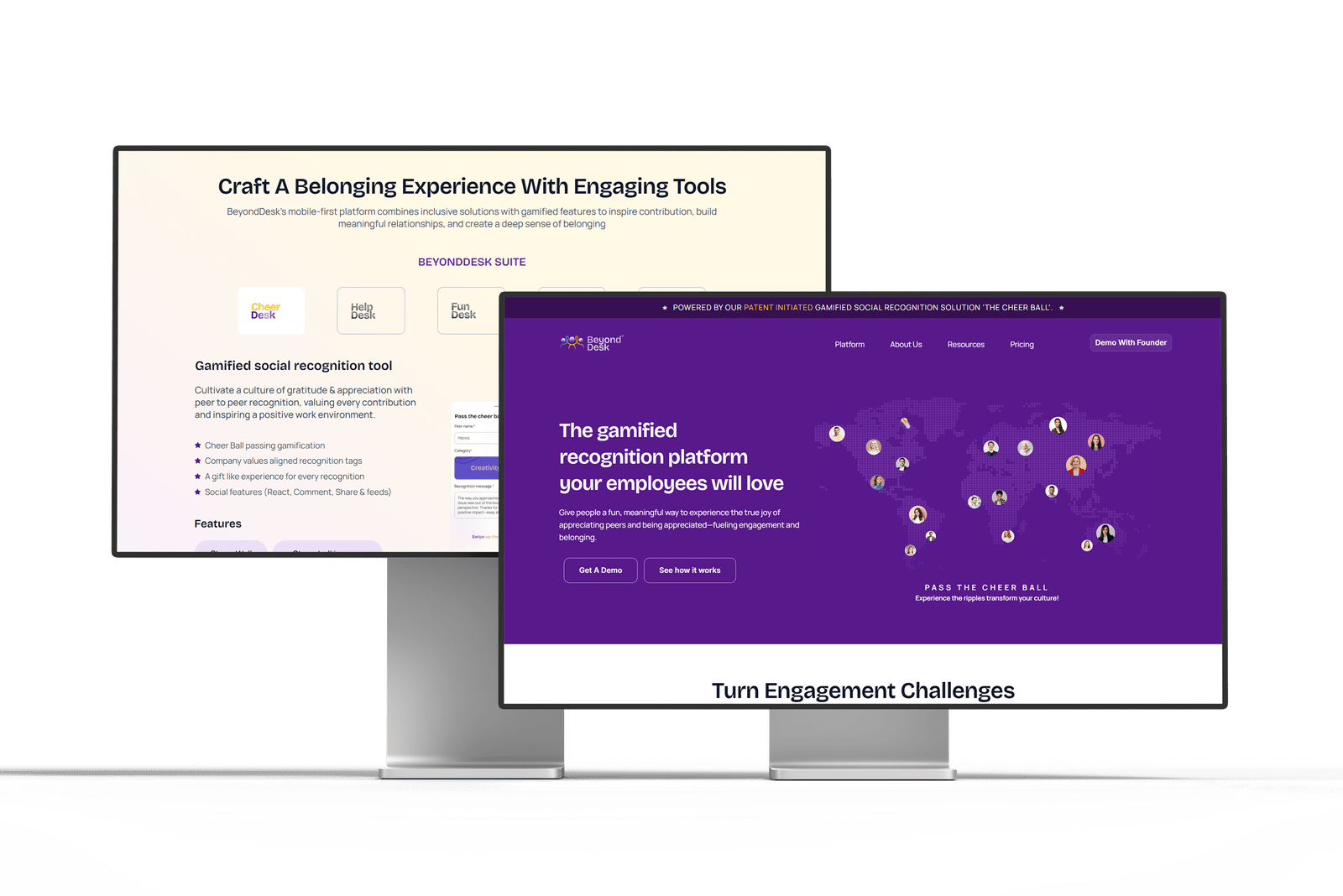
The digital landscape is evolving faster than ever, with web design trends in 2025 pushing the boundaries of creativity, functionality, and user experience. As businesses and creators compete for user attention, modern websites must be visually engaging, interactive, and technologically advanced to stay relevant.
1. Animation and Interactive Design
Motion is no longer just an aesthetic choice—it’s an essential tool for engaging users and guiding them through a website. In 2025, animations are becoming more sophisticated, enhancing the storytelling and user experience.
Micro Animations: Subtle Yet Impactful
Small, interactive animations are being used to highlight key elements like buttons, menus, and call-to-actions (CTAs). These animations provide visual feedback, improving user engagement without overwhelming the design. For example, a button that slightly expands when hovered over gives users an intuitive sense of interactivity.
Moving Type: Dynamic Typography for Engagement
Static text is being replaced with moving typography that shifts, fades, or animates as users scroll. This adds a layer of interactivity, making content feel more dynamic and engaging. When used strategically, animated text can draw attention to important messages or guide users through the page naturally.
Storytelling & Interactive Elements
Brands are using animation and interactivity to create immersive storytelling experiences. Instead of static web pages, users can now navigate through animated timelines, parallax effects, and clickable elements that reveal additional content. These techniques make websites feel more like interactive experiences rather than just informational platforms.
2. Visual Aesthetics and Design Elements
The visual identity of websites in 2025 is defined by bold, expressive styles that capture attention while maintaining clarity. Geometric aesthetics introduce structured, modern designs with sharp lines and patterns that add depth and symmetry. Retro-inspired design is making a comeback, blending nostalgic elements with contemporary creativity to create fresh, unique layouts. Dopamine color palettes, featuring bright and energetic hues, are being used to evoke emotions and boost engagement, making websites feel more lively and exciting. At the same time, organic design trends bring in natural textures, earthy tones, and hand-drawn elements to create a more human and authentic digital experience. These evolving aesthetics allow brands to establish a strong identity while keeping their websites visually appealing and immersive.
3. Layout and Navigation Innovations
User experience is evolving beyond traditional grid-based layouts and vertical scrolling. In 2025, web designers are experimenting with new ways to navigate and structure content, making sites more engaging and immersive.
Visible Grids: Order with an Aesthetic Appeal
While grids have always been a part of web design, they’re now being used as visible design elements rather than just invisible structures. Exposed grid lines, asymmetrical placements, and overlapping sections create a unique, layered effect that makes layouts more visually interesting.
Asymmetric Layouts: Breaking the Mold
Perfectly aligned layouts are taking a backseat as asymmetric designs become more popular. By intentionally placing elements off-center, designers create a sense of movement and spontaneity. This approach adds personality and makes websites feel less rigid while still maintaining a functional flow.
Horizontal Scrolling: A New Way to Navigate
Vertical scrolling has been the norm for decades, but designers are experimenting with horizontal scrolling to create immersive, story-driven experiences. This technique works particularly well for portfolios, product showcases, and interactive storytelling, giving users a fresh way to engage with content.
Innovative layouts and navigation styles are making websites feel more dynamic while prioritizing user-friendliness. The challenge lies in striking a balance between creativity and usability, ensuring that navigation remains intuitive across all devices.
4. Minimalism and Brutalism
Web design in 2025 continues to embrace the “less is more” philosophy, focusing on simplicity while introducing bold, unpolished aesthetics that prioritize authenticity. Modern minimalism removes unnecessary elements, making every component on a webpage intentional. White space, clean typography, and subtle color palettes create a sense of openness and clarity, ensuring fast load times and an easy user experience.
At the same time, brutalism is making a comeback, rejecting polished corporate aesthetics in favor of raw, almost unfinished designs. Oversized typography, stripped-down layouts, and minimal imagery define this approach, appealing to brands that want to stand out with an unconventional, rebellious style. While minimalism seeks elegance through restraint, brutalism embraces the raw and unfiltered, both offering distinct ways to create engaging and memorable digital experiences.
Minimalism and brutalism, though visually opposite, share a core principle—stripping away unnecessary elements to focus on usability and impact.
5. Technology and Immersive Experiences
Advancements in AI, 3D design, and interactive elements are transforming web design, making online experiences more engaging and dynamic. Futuristic gaming-inspired interfaces are becoming popular, incorporating neon colors, cyberpunk aesthetics, and high-tech grid layouts that create visually striking designs.
Three-dimensional elements are no longer just decorative but integral to user interaction, with parallax scrolling, interactive objects, and VR-ready experiences adding depth and realism. These immersive features make websites feel more dynamic and engaging.
AI is also reshaping web design by enabling personalized user experiences. From content recommendations and automated chatbots to adaptive interfaces that respond to user behavior, AI-driven design enhances usability and engagement. As these technologies evolve, websites are becoming more intuitive, interactive, and tailored to individual needs, setting a new standard for digital experiences.
6. User Experience (UX) and Accessibility
In 2025, web design is focused on creating seamless and inclusive experiences that prioritize speed, responsiveness, and accessibility. UX-driven design ensures that websites load quickly, have intuitive navigation, and provide a clutter-free interface that enhances usability. A well-optimized user experience reduces frustration, increases engagement, and improves search engine rankings.
With mobile usage continuing to dominate, responsive web design is essential. Websites must adapt effortlessly across different devices, ensuring a consistent experience whether accessed on a desktop, tablet, or smartphone. Touch-friendly interfaces and fluid layouts make browsing smoother and more enjoyable.
Accessibility is also a key consideration, with designers incorporating features like keyboard navigation, optimized color contrast, and descriptive alt text for images. By making websites more inclusive, businesses can reach a wider audience while complying with global accessibility standards. A user-first approach not only improves functionality but also builds trust and engagement, ensuring a more meaningful digital experience for everyone.
Conclusion
Web design in 2025 is shaping the future of digital experiences with bold aesthetics, immersive technology, and user-first principles. From interactive animations to AI-driven personalization, the latest trends emphasize both creativity and functionality.
As businesses compete for attention in an ever-evolving digital landscape, staying ahead of these trends is essential. Whether you’re a designer, developer, or business owner, embracing these innovations will help you create visually stunning, high-performing websites that engage users and drive results.
The future of web design isn’t just about looking good—it’s about delivering smarter, faster, and more immersive experiences that cater to the needs of modern users.
Revamp Webz can help you build a stunning website from scratch or give your existing site a modern, high-performing redesign.
